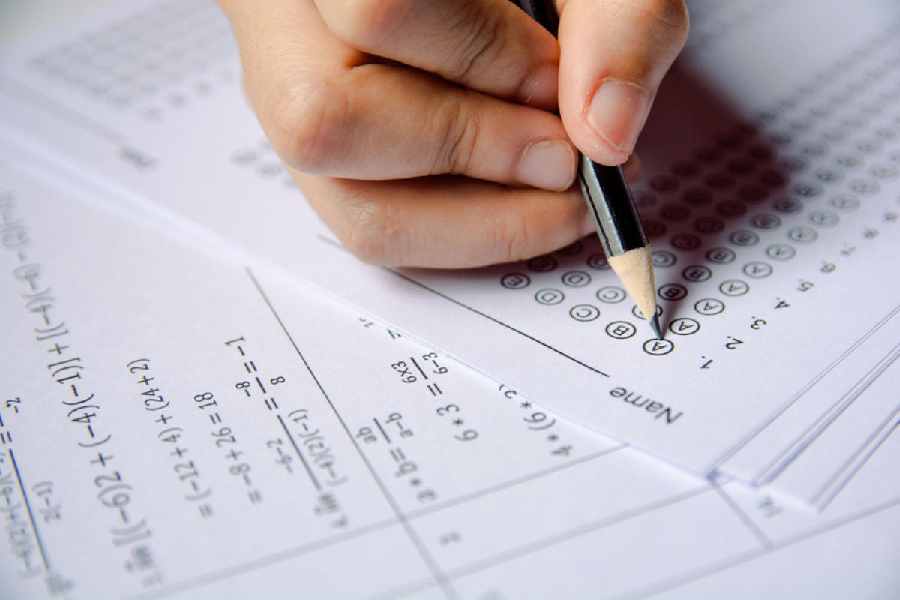Millions of Class VI pupils will this year be taught about ancient Indian mathematicians’ contribution to knowledge, with senior mathematicians welcoming the development but cautioning that unproven information should not be imparted to children to foster nationalistic pride.
The new Class VI maths textbook, Ganita Prakash, released last week by the NCERT, has additional chapters describing how Indian mathematicians developed the knowledge of fractions, operations with zero, positive and negative numbers, and a debit and credit accounting system.
Perhaps in the spirit of Indianisation, the book has dropped the international system of numeration, which puts a comma after every three digits. This means that unlike before, Class VI pupils will continue counting in lakhs and crores instead of millions and billions.
The previous Class VI maths textbook, introduced in 2006 and revised this year, used not just the international system of numeration but taught operations with eight-digit numbers. The new book restricts itself to five-digit numbers.
According to the new book, the Rigveda presents the concept of 360 degrees through a wheel.
“The division of a circle into 360 parts goes back to ancient times. The Rigveda, one of the very oldest texts of humanity going back thousands of years, speaks of a wheel with 360 spokes (Verse 1.164.48),” it says.
“Many ancient calendars, also going back over 3,000 years — such as calendars of India, Persia, Babylonia and Egypt — were based on having 360 days in a year.”
Although the mistaken idea of a year having 360 days may have led to the division of a circle into 360 parts — one for each day — the two are scientifically unconnected. How many parts a circle should be divided into is ultimately a matter of convention, but the number of days in a year is a matter of empirical verification and varies from planet to planet.
While the convention has caught on, the mistaken count of days in an Earthly year has subsequently been rectified by scientists. Perhaps the book should have underlined the distinction to avoid confusing young minds.
The book says the Rigveda mentions fractions, referring to the fraction 3 by 4 as “tri-pada”. It says the general rules and procedures for computing with fractions were “first codified formally and in a modern form by Brahmagupta”.
It adds that Brahmagupta was also the first to describe the zero as a number on an equal footing with positive and negative numbers, and the first to give explicit rules for performing arithmetical operations on all numbers: positive, negative, and zero.
These numbers were transmitted to the Arab world by the 9th century, before making their way to Europe by the 13th century, the book says.
Kautilya wrote extensively on debit and credit in the Arthashastra — which the book dates to 300 BCE — including the recognition that an account balance could be negative, it adds.
“The way we write fractions today, globally, originated in India. In ancient Indian mathematical texts, such as the Bakshali manuscript (from around the year 300 CE),” the book says.
When ancient Indians wanted to write 1/2, they wrote 2 below one without a line in between, according to the book.
The old book had two separate chapters on decimals and algebra, which the new book has dropped, presumably reserving them for higher classes.
Amber Habib, professor of mathematics at Shiv Nadar University, said the book contains no egregious claims but is guilty of omissions and some ignorance of the development of mathematical knowledge outside India.
“For example, there is a statement about Egyptians and Mesopotamians working mainly with unit fractions. This is true of Egyptians but not Mesopotamians. The latter had a very detailed understanding of place value (in base 60) including ‘zero’ as a marker of a missing place value,” he said.
“It could also be noted that these two civilisations were mathematically advanced by 2000 BC, whereas comparable Indian material is at best from around 800 BC.
“About the Arthashastra, it is interesting that they confidently date it to 300 BC whereas there is a lot of uncertainty about the date, with estimates going from 300 BC to AD 300.”
Habib said the book uses urban-centric ideas for illustrations. For example, the negative number explanations are based on a fancy multi-floor building.
Hukum Singh, former head of the department of education in science and mathematics at NCERT, said that introducing children to India’s repository of ancient knowledge is a good idea. “But the content should be authentic,” he said.
Birendra Nayak, former head of mathematics at Utkal University, Bhubaneswar, said much knowledge had originated in India as elsewhere in the past millennia.
“Children should be inspired to know about the evolution of knowledge in India and other parts of the world. Information should be given on the evolution of knowledge but exaggeration should be avoided,” Nayak said.











